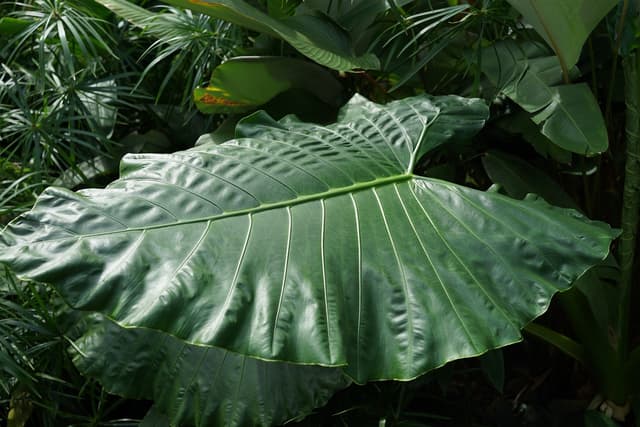Starter quiz
 What is the function of leaves on a plant?
What is the function of leaves on a plant?- reproduction
- transporting water and nutrients
- absorbing water
- making food ✓
-
 What is the function of flowers on a plant?
What is the function of flowers on a plant?- reproduction ✓
- transporting water and nutrients
- absorbing water
- making food
-
- What is seed dispersal?
- the way seeds are formed inside a plant
- the way gardeners can collect seeds from plants
- the way seeds grow into plants
- the way seeds are moved away from the parent plant ✓
-
- What are animal adaptations?
- the different places animals live
- special characteristics animals have to help them survive ✓
- the range of food sources animals can eat
-
- How do animals get their adaptations?
- They choose to adapt during their lifetime.
- They are shown how to adapt by humans.
- They are passed from one generation of a species to another. ✓
-
 Order the stages of pollination in flowering plants.
Order the stages of pollination in flowering plants.- 1⇔An insect or other pollinating animal lands on a flower to drink nectar.
- 2⇔Pollen from the flower’s anthers is rubbed onto the animal.
- 3⇔The animal, covered in pollen, moves to another flower.
- 4⇔The pollen rubs off the animal onto the stigma of another flower.
- 5⇔Pollen from the stigma moves down to the ovary where fertilisation takes place.
Exit quiz
 What is the name for the special features that plants have that help them to survive and grow in their habitats?
What is the name for the special features that plants have that help them to survive and grow in their habitats?- 'adaptations' ✓
- Plant adaptations are …
- the same for every plant.
- passed from one generation of a species to another. ✓
- transported from plant to plant by pollinators.
- only for plants living in extreme environments.
-
- Which of these adaptations would help to prevent a plant form being eaten?
- tasty fruit
- large, flat leaves
- sharp thorns ✓
- deep roots
- thick stem
-
- Which of these adaptations would help a plant to be pollinated?
- large, bright flowers ✓
- sharp spines
- long, thin leaves
- strong roots
- pleasant smell ✓
-
- Match the plant adaptation to the habitat it is suited for.
- carnivorous plant⇔habitat with few nutrients in soil ✓
- thick stem for storing water⇔very hot, dry habitat ✓
- seeds that can float⇔habitat near bodies of water ✓
- hairy stem⇔very cold habitat ✓
- Which of these plants has adaptations that would suit a rainforest floor habitat, where there is plenty of water but little sunlight?
 taro plant ✓
taro plant ✓ cactus
cactus rosemary
rosemary
Worksheet
Loading worksheet ...
Presentation
Loading presentation ...
Video
Lesson Details
Key learning points
- Plants have special features, or adaptations, that help them to survive, live and grow in their habitats.
- Adaptations are passed from one generation of a species to another.
- Many plants have adaptations to help them successfully reproduce.
- Some plants have adaptations that protect them from being eaten.
Common misconception
Pupils may think that, while animals need to be well adapted to survive, plants do not and they simply grow where and how they can.
Use the examples in the slide deck to exemplify the various ways plants are adapted to survive in different environments, just like animals are.
Keywords
Adaptation - An adaptation is a feature of a plant or animal that helps them to survive in their habitat.
Survive - To survive means to continue to stay alive.
Habitat - The place where a plant or animal lives is called its habitat.
Environment - An environment is the surroundings or conditions that an animal or plant lives in.
Pollinator - A pollinator is an animal which pollinates a flowering plant.
+